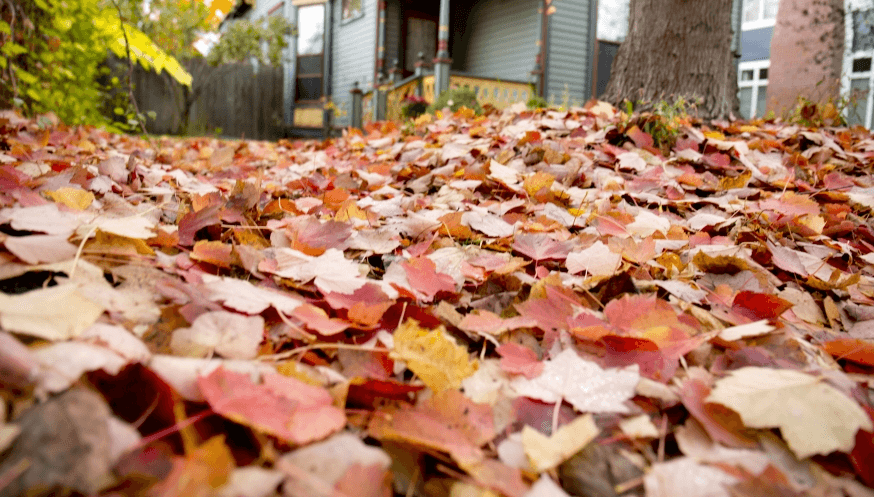To mow, or not to mow
Are you wasting money on lawn mowing you don't need?
Knowing when to start and to stop seasonal lawn can be critical to the long-term health of the grass.
Lucky for you, there are a few signs you can keep in mind.
These 6 signs will tell you when it’s time to begin mowing for the season, and when to put the mower back in storage.
3 Signs To Break Out the Mower in Spring
Here are a few tell-tale signs that it’s time to begin mowing the lawn.
Since Magnolia trees start to bloom when the soil reaches ideal growth temperature, (42 degrees Fahrenheit) in February or March. Their blooms make a perfect marker for when to begin mowing.
These blooms confirm that the lawn has indeed awake and stable enough for cutting.
Magnolia trees flourish in most parts of the United States, so this is a great barometer to know when to start cutting the grass.
If the leaves were not picked up last fall, and are still packed from the lawn in March, it’s time to mow ASAP.
Look, leaves block sunlight and smother grass thus preventing needed moisture from evaporating on the lawn. This can cause fungal problems and cause the grass to die, resulting in a patchy or a dead lawn in the spring.
Pro Tip! Dropping the height of the mower to around 2.5 inches or to the middle setting is recommended.
If the lawn’s final mow last season was not below 3 inches, and it’s now March/April, it’s time to begin mowing.
Leaving the grass too long in the winter can cause the grass to become matted and encourage winter diseases, such as pink and grey snow mold.
For best results, only remove the top 1/3 of the grass on this initial mow as this will rejuvenate the turf and wake it up faster when the sun hits.
3 Signs it's Time To Put the Mower Away in Winter
When old man winter blows around the bend, here are a few signs it’s time to pack up the mower for the winter.
Most people don’t know this but, grass actually never stops growing. Growth is just really slow in the fall and winter months.
When the temperature drops below 40 degrees Fahrenheit, the grass will not grow high enough to warrant mowing.
A week of consistent temperatures below 40 degrees will close the door on the lawnmower for the season.
If you have a yard in Clarksville, Tennessee, or surrounding areas, this cool temperature may not occur until late November.
If the weather has been super dry and cooler than 50 degrees Fahrenheit, it is okay to stop mowing.
Without the proper moisture and cool temperatures, the grass will not grow and therefore, will not need mowing.
Once again, depending on the climate, this window is normally around late October through early December.
If the lawn has already been fertilized for the fall, mowing is no longer needed.
Here’s the deal, mowing after the winter fertilization can disrupt the root growth over the winter months. This last fertilization will also give the lawn needed nutrients lost from the hotter months and feed the roots all winter long.
Typically, this winter fertilization is applied before the first freeze so it should occur around November or early December.
So, What is the Short Answer?
Here’s the deal, giving a concrete date on when to start and stop mowing the grass is almost impossible.
It’s simple; climate, types of grass, ground conditions, and rainfall are all huge factors that have to be taken into consideration.
For example, the St. Augustine grass in Palm Harbor, Florida may need to be mowed year around, but the Zoysia grass in Florissant, Missouri may only need mowing from March to October.
Look, if you start mowing too early in the season, you can run the risk of compacting the grass. Or even killing new roots before they have a chance to mature and cultivate. This can cause grass to grow in patches or to not fully turn green.
On the other hand, putting the lawnmower away too early has its consequences as well. If the grass gets too tall in the fall and winter, blades will flop over and shade each other.
This reduces the amount of photosynthesis that can occur throughout the winter months. And prevent the grass from getting the food needed for survival in the colder months.
Navigating the Mowing Season in a Nutshell
Once again, there is no set date when it comes to the beginning or to the end of the mowing season.
These tips are mere guidelines that a homeowner can use to gauge the intervals to help protect and keep the lawn happy.
Remember, keeping all these tips in mind will ensure that you and your lawn are not left out in the cold when it comes to being the envy of the neighborhood.





 Share
Share

















